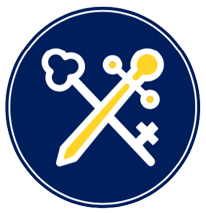We use the DfE approved Twinkl phonics programme. This is a systematic synthetic phonics programme which promotes the use of phonics as the prime route to reading unknown words.
All children receiving phonics instruction read decodable books matched to their phonics knowledge both in school and at home.
We use the rhino readers which compliment our scheme
Twinkl phonics is designed for daily teaching sessions (from Nursery) in a clearly defined, incremental sequence. This sequence enables children to read and spell many words early on. It progresses from simple to more complex phonic knowledge and skills, cumulatively covering all the major GPCs (grapheme-phoneme correspondences) in English. This structured route aims for children to meet or exceed the expected standard in the Y1 PSC (Phonics Screening Check) and all national curriculum expectations for word reading through decoding by the end of KS1.
There are four key concepts that we teach to all pupils, these are:
- Letters are symbols (spellings) that represent sounds.
- A sound may be spelled by one, two, three or four letters:
E.g. dog street night eight
- The same sound can be spelled in more than one way:
E.g. rain acorn cake day
- Many spellings can represent more than one sound:
E.g. head seat break
There are three key skills that we teach to all pupils, these are:
- Blending: the ability to push sounds together to build words.
- Segmenting: the ability to pull apart the individual sounds in words.
- Phoneme manipulation: the ability to insert sounds into and delete sounds out of words. This skill is necessary to test out alternatives for spellings that represent more than one sound
Common exception or ‘tricky’ words:
Common exception words enable children to read texts. These words are kept at a minimum in the early phases.
For example:
I go to no into the
The national curriculum refers to these as ‘common exception words’ because they contain grapheme phoneme correspondences that are unusual or have not yet been taught. Common exception words are built into each phase of the programme, and it is not an expectation that children will be provided with lists of words to learn.
Each lesson is built around direct teaching sessions (revise, hear, read, write, apply), with extensive teacher-child interaction. Throughout each session, children are expected to actively engage in the learning. Each lesson involves a multisensory. The lesson structure provides a consistent approach where children get to know what is coming next and minimum time is spent explaining new activities. The teaching and learning activities are interesting and engaging but firmly focused on intensifying the learning associated with the phonic goal. Any computer resources used by schools match the order of GPCs.
Assessment is carried out at regular intervals with top-up sessions provided to support children who are at risk of falling behind. We sometimes put children in smaller groups or even in a different class for phonics if they are falling behind or exceeding their peers.
Links to the Twinkl scheme
- https://www.twinkl.co.uk/resources/twinkl-phonics/level-1-twinkl-phonics
- https://www.twinkl.co.uk/resources/twinkl-phonics/level-2-twinkl-phonics
- https://www.twinkl.co.uk/resources/twinkl-phonics/level-3-twinkl-phonics
- https://www.twinkl.co.uk/resources/twinkl-phonics/level-4-twinkl-phonics
- https://www.twinkl.co.uk/resources/twinkl-phonics/level-5-twinkl-phonics
- https://www.twinkl.co.uk/resources/twinkl-phonics/level-6-twinkl-phonics




